In India, the fruit yield per acre varies significantly based on the type of fruit, region, and farming techniques used. The nation has a rich agricultural heritage, and fruit yield per acre in India is a vital metric for farmers and the overall economy. The statistics on fruit production per acre in India show a vast potential that could be further unlocked with the right practices.
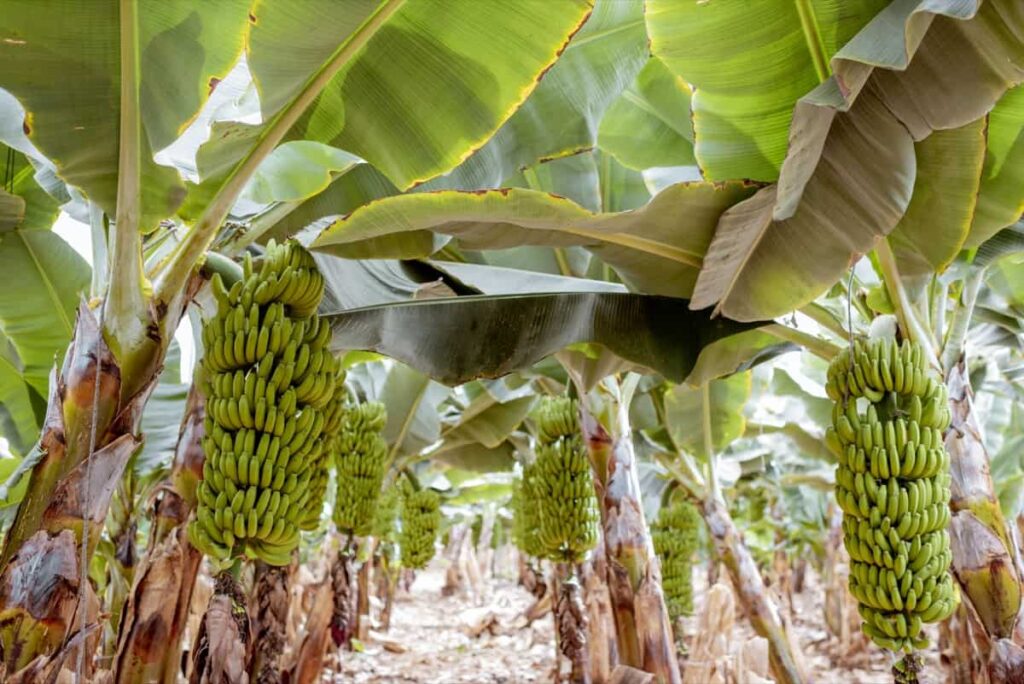
When discussing specific fruits like dragon fruit, the fruit yield per acre is particularly promising. However, the yield of fruits per acre in India is affected by various factors. To get a holistic understanding, it’s essential to delve into the average fruit yield per acre, per acre by crop, and per acre by region.
Factors Affecting Fruit Yield in India
Various determinants play a role in India’s fluctuating fruit yield per acre. One primary factor is the soil quality and its fertility. Proper nutrients and pH levels are necessary for optimal fruit production per acre in India. Water availability is another significant factor. Inadequate or excessive water can affect the yield, necessitating a balanced irrigation system. Pests and diseases can heavily reduce fruit yield if not properly managed. Additionally, weather conditions, such as unseasonal rainfall or extreme temperatures, impact the yield of fruits per acre in India.
Another consideration is the choice of crop variety. Some varieties might be better suited for particular regions or conditions, influencing the average fruit yield per acre. Lastly, agricultural practices, like the techniques for increasing fruit yield and the spacing between plants, play a crucial role. It’s also essential to remember that fruit yield per acre varies by region, with some areas being more conducive to specific fruits.
Importance of Yield Improvement in Fruit Production
Improving the fruit yield per acre in India holds immense potential for the nation’s economy and the livelihood of millions of farmers. An enhanced fruit production per acre in India means higher income for farmers, which can lead to better living standards and increased spending capacity. On a broader scale, it ensures food security and can reduce the dependency on fruit imports, making the country self-reliant.
In case you missed it: 12 Best Drip Irrigation Kits for 1-acre, 50, 100, and 1000 Plants: Price List Included
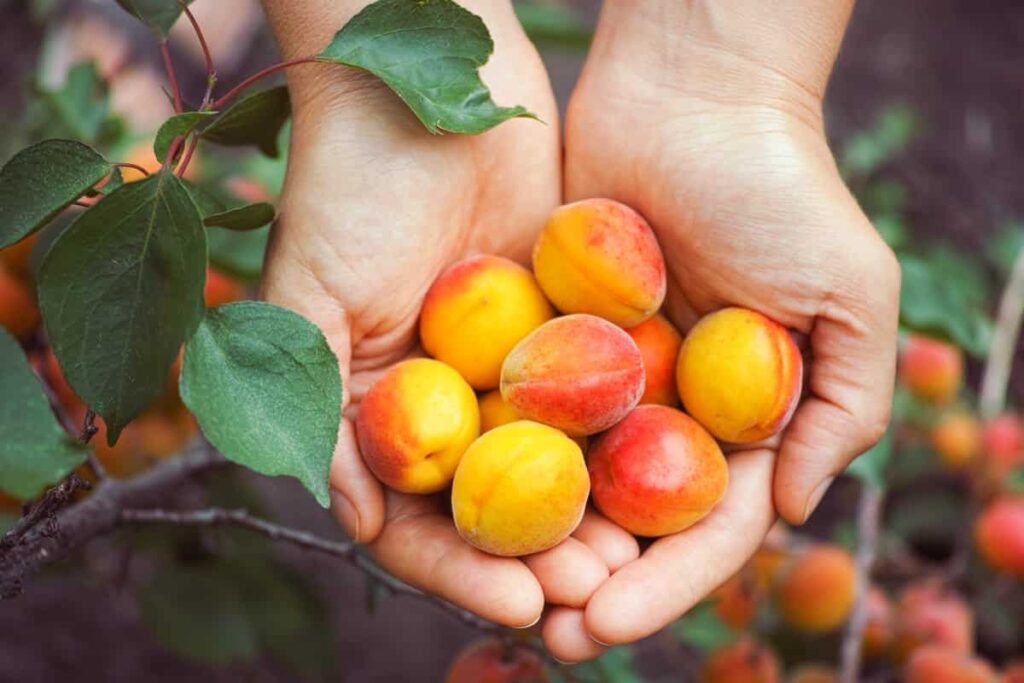
It’s not just about the average fruit yield per acre; focusing on specific fruits, like the dragon fruit yield per acre, can open up new market opportunities and export potential. Farmers can grow more fruits using the same land by using methods to boost fruit production, making farming better for the environment and more efficient.
Understanding the Current Fruit Yield Scenario in India
The current fruit yield per acre scenario in India is a mixed bag. While India boasts of being among the top fruit producers globally, there’s still a significant gap in the yield per acre by crop. For instance, the dragon fruit yield per acre is impressive in specific regions but not consistently across the country. Similarly, the average fruit yield per acre might be satisfactory for certain fruits but not all.
Regional differences further complicate this picture, as fruit yield per acre by region can differ starkly. However, the silver lining is the vast untapped potential. By adopting the right techniques for increasing fruit yield and addressing the factors affecting fruit yield per acre, India can undoubtedly boost its fruit production to new heights.
Best Practices for Increasing Fruit Yield per Acre
When focusing on enhancing the fruit yield per acre in India, employing a combination of modern and traditional best practices is paramount. One of the primary steps is selecting the right fruit varieties well-suited to the local climate and soil conditions. Regular monitoring for pests and diseases and timely intervention can prevent significant losses.
Pruning, which involves removing unwanted branches and leaves, can promote better growth and higher yield. Using crop rotation can stop pests and diseases and make the soil healthier. Organic mulching retains soil moisture, suppresses weed growth, and enhances soil fertility. Farmers should attend training sessions and workshops to learn new farming methods and technology, so they can get more fruit from each acre of their land.
Soil Management Techniques for Improved Fruit Yield
Soil is the foundation of any successful agricultural endeavor, and managing it correctly is essential for improving fruit yield per acre. Regular soil testing should be carried out to understand its nutrient content, pH levels, and other vital characteristics. Based on the results, farmers can amend the soil using organic compost or other soil enhancers to balance nutrient levels. Proper plowing techniques can enhance soil aeration, ensuring roots receive adequate oxygen.
In case you missed it: A Comprehensive Analysis of Crop Yield Per Acre in India: Yield Improvement Tips
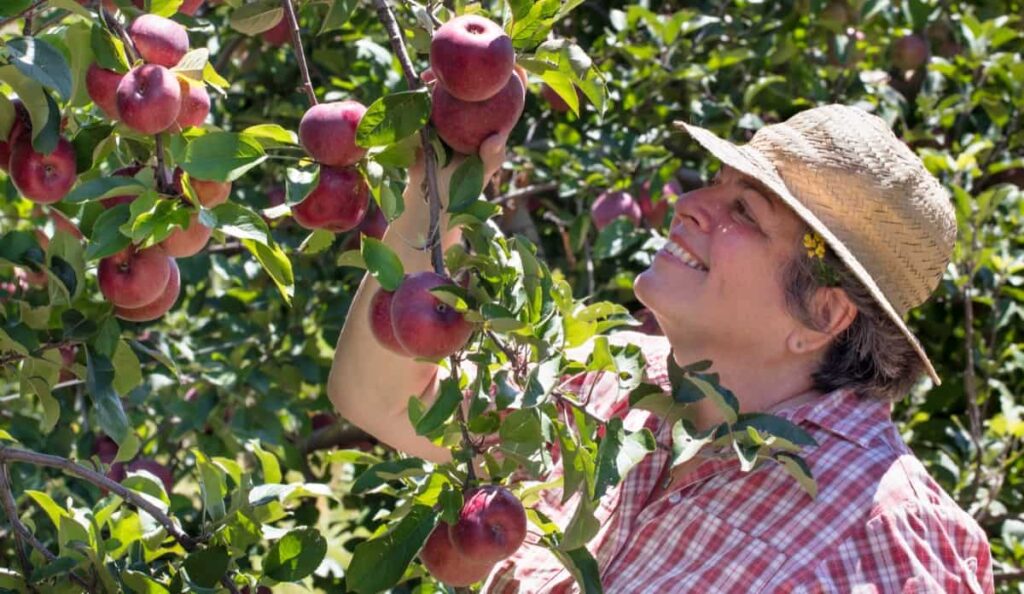
Crop rotation and intercropping are effective strategies to prevent soil degradation and improve its fertility over time. Organic matter, such as decomposed leaves and animal manure, can be incorporated to increase the soil’s water retention capacity and provide essential nutrients. Lastly, erosion control methods like terracing or contour farming can protect the valuable topsoil layer, ensuring sustained and improved fruit yield.
Water Management Strategies for Enhancing Fruit Production
Water is a critical component for fruitful agriculture, and its effective management can significantly enhance fruit production per acre in India. Installing drip irrigation systems ensures water reaches the root zone directly, minimizing wastage and ensuring efficient water use. Collecting rainwater through rainwater harvesting systems can be a supplementary water source during dry periods.
Mulching, whether using organic material like straw or synthetic materials, can retain soil moisture, reducing the need for frequent watering. Implementing techniques like contour trenching can prevent runoff and promote water infiltration into the soil. Keeping your irrigation system clean and well-maintained is crucial. This helps stop clogs and makes sure you always have a steady water supply. It’s also essential to schedule watering based on the specific needs of the fruit crops, as over-watering or under-watering can negatively impact the yield.
Nutrient Management Approaches for Higher Fruit Yield
A fruit crop needs a balanced intake of essential nutrients to flourish and produce an optimal yield. Regular soil tests can guide farmers on the nutrients their soil might lack. Based on this, they can apply the appropriate organic or inorganic fertilizers to supplement the soil’s nutrient content. Implementing integrated nutrient management (INM) that combines chemical fertilizers and organic manures can ensure a sustained release of nutrients.
Green manuring, which involves growing specific plants and then plowing them back into the soil, can naturally increase nitrogen content. Foliar application, where nutrients are sprayed directly onto leaves, can effectively address nutrient deficiencies quickly. It’s essential to understand the nutrient requirements of specific fruit crops and amend the soil accordingly, ensuring a consistent and high fruit yield per acre.
Pest and Disease Control Measures for Optimal Fruit Production
Achieving optimal fruit production per acre in India necessitates robust measures against pests and diseases. Regular monitoring of orchards and fields can help in the early detection of pest infestations or disease symptoms, allowing for timely interventions. Biological control agents, such as beneficial insects, can keep harmful pest populations in check. When selecting pesticides, opting for environmentally friendly ones with minimal residual effects is essential, ensuring the fruits remain safe for consumption.
In case you missed it: How to Start Avocado Farming in India: Varieties, Yield, Cost, and Profit per Acre
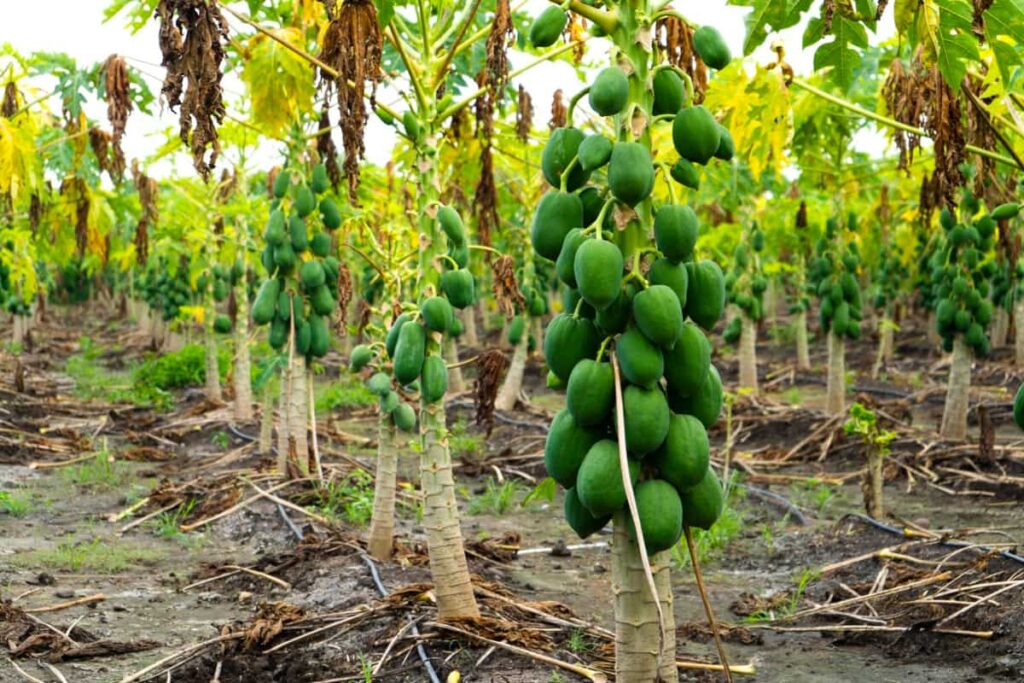
Preventive measures can reduce disease transmission, like using disease-resistant fruit varieties and maintaining proper spacing between plants. Proper sanitization of equipment and tools can also prevent the spread of pathogens. Regularly removing and destroying diseased plants or fruits can break the life cycle of many pathogens, ultimately protecting the overall fruit yield per acre from significant losses.
Role of Crop Rotation in Boosting Fruit Yield per Acre
Crop rotation is indispensable in maintaining soil health and boosting fruit yield per acre. By periodically changing the type of fruit or crop grown on a particular piece of land, farmers can prevent the buildup of soil-borne diseases and pests specific to one crop. Crop rotation aids in the replenishment of vital soil nutrients, as different crops have varying nutrient demands.
For example, leguminous crops can fix atmospheric nitrogen, benefiting subsequent fruit crops that require high nitrogen levels. This practice also improves soil structure and reduces erosion by promoting the growth of diverse root systems. By breaking the monotony of planting the same fruit or crop continuously, crop rotation minimizes the risk of significant pest infestations or disease outbreaks, thus playing a critical role in enhancing the overall fruit yield per acre in India.
Effective Weed Management for Increased Fruit Productivity
Weeds are a constant challenge in agriculture, competing with fruit crops for essential resources like water, nutrients, and sunlight, ultimately impacting the fruit yield per acre. Effective weed management starts with preventive measures, such as using weed-free planting material and proper land preparation before sowing or planting. Physical methods like hand weeding, hoeing, and mulching can control weed growth without chemicals.
Mulching, in particular, suppresses weed germination by blocking sunlight. When opting for chemical methods, it’s essential to select herbicides that target specific weeds without harming the fruit crops. Herbicide application should be timely and in recommended doses to minimize adverse effects. Additionally, alternating between different herbicide modes of action can prevent the development of herbicide-resistant weed populations, ensuring sustained fruit productivity.
Pruning and Training Techniques for Enhanced Fruit Yield
Pruning and training are integral horticultural practices that directly influence the fruit yield per acre. Pruning involves the removal of unnecessary branches, twigs, and leaves, allowing the plant to direct its energy towards fruitful growth. This helps improve fruit size and quality and ensures better sunlight penetration and air circulation, reducing the risk of diseases. Different fruit crops require specific pruning techniques, so it’s crucial to understand the unique needs of each type.
In case you missed it: 14 Steps for Preparation of Seaweed Liquid Fertilizer: DIY for Plants and Lawns from Fresh and Dried Seaweed
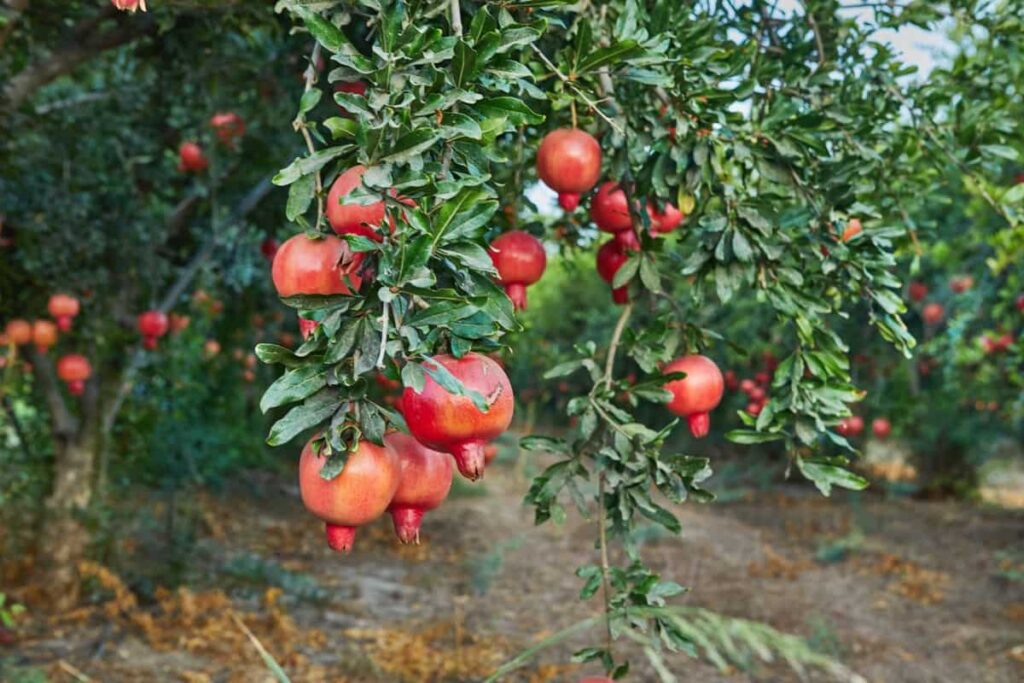
Conversely, training involves shaping the plant in a particular way to support its growth and productivity. This can be achieved using supports like trellises or stakes, guiding the plant’s growth in the desired direction. Training ensures that plants have an optimal structure, reducing the chances of branches breaking due to fruit weight and ensuring maximum light exposure for photosynthesis. Combined, these techniques are pivotal in optimizing the fruit yield per acre.
Importance of Pollination in Maximizing Fruit Production
Pollination is a fundamental biological process that directly influences fruit production per acre in India and worldwide. This means moving pollen from one part of a flower to another, which makes the flower able to make fruit. Without efficient pollination, many fruit crops would witness reduced yields or even fail to produce fruits. Natural pollinators, such as bees, butterflies, and certain birds, play a pivotal role in this process. Their activities ensure the transfer of pollen between flowers, promoting genetic diversity and ensuring fruit set.
In some agricultural settings, manual pollination might be practiced to guarantee fruit production, especially when natural pollinators are scarce. Ensuring the presence and health of pollinators, creating conducive environments for them, and understanding the specific pollination needs of each fruit crop are crucial. Their invaluable role ensures that fruit-bearing plants can reproduce successfully, underlining the importance of pollination in maximizing fruit production.
Adoption of Modern Technologies for Improved Fruit Yield
In today’s rapidly evolving agricultural landscape, adopting modern technologies has become a cornerstone for achieving improved fruit yield per acre. Precision farming, which employs technology to give crops just the right nutrients for the best growth, can boost production and save resources.
Drones with sensors can provide real-time data on crop health, moisture levels, and potential pest infestations, allowing for timely interventions. Satellite imagery can assist farmers in monitoring large orchards identifying areas that might require attention. Furthermore, data analytics and artificial intelligence can predict potential challenges and offer solutions based on historical and real-time data.
In case you missed it: Optimizing Sweet Orange Orchard Management: A Month-By-Month Operation Guide for Maximum Yield
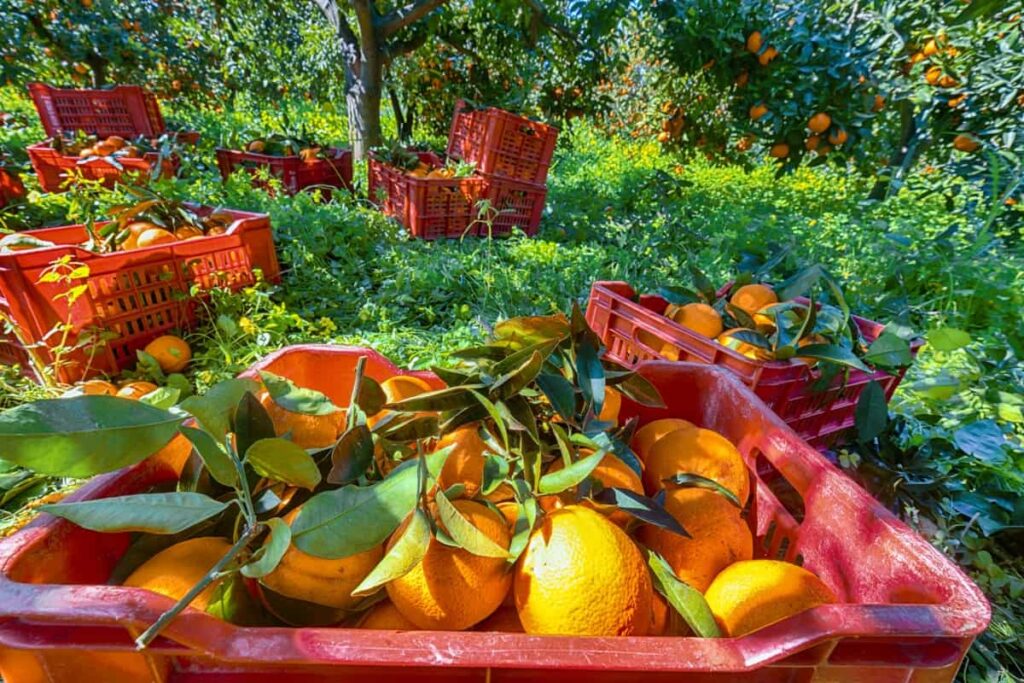
Automated irrigation systems ensure optimal water usage, while smart greenhouses equipped with sensors can provide the perfect environment for fruit crops, adjusting temperature, humidity, and light as required. By embracing these technologies and integrating them into traditional farming practices, farmers can harness their potential to significantly boost fruit yield per acre, ensuring sustainable and efficient fruit production.
Fruit Yield Per Acre in India
| Fruit | Average Yield Per Acre (Tons) |
| Mango | 10 – 12 |
| Banana | 30 – 40 |
| Papaya | 25 – 35 |
| Guava | 10 – 15 |
| Apple | 10 – 12 |
| Orange | 10 – 15 |
| Pineapple | 18 – 20 |
| Grape | 8 – 12 |
| Dragon Fruit | 6 – 8 |
| Pomegranate | 12 – 15 |
| Watermelon | 20 – 25 |
| Lychee | 10 – 15 |
| Coconut (per tree annually) | 0.05 – 0.1 (50-100 kg) |
| Lemon | 15 – 20 |
| Jackfruit | 15 – 20 |
| Kiwi | 10 – 15 |
| Fig | 5 – 10 |
| Custard Apple | 5 – 8 |
| Passion Fruit | 10 – 15 |
| Pear | 10 – 12 |
| Strawberry | 8 – 12 |
| Peach | 8 – 10 |
| Plum | 7 – 9 |
| Apricot | 5 – 7 |
| Cherry | 5 – 7 |
In case you missed it: 14 Best Galvanized Metal Raised Garden Beds: For Backyard Vegetables, Herbs, and Flowers
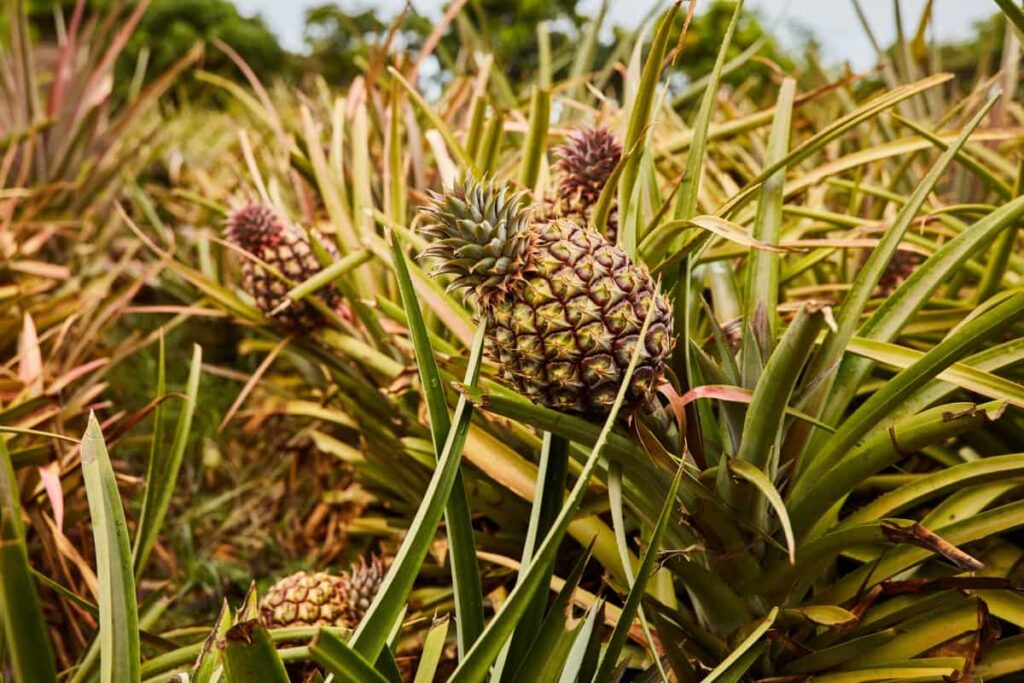
Conclusion
Integrating modern technology with traditional farming practices is imperative for optimizing fruit yields in India. Farmers can ensure sustainable and prolific fruit production by understanding and addressing factors like pollination and adopting advanced techniques.
- Management Pests and Diseases in Your Cotton Field
- Sheep Farming Business Plan for Beginners
- Aquaponic Farming at Home: A Step-By-Step Guide
- Profitable Village Farming Business Ideas in 2024
- High-Yield Aquaculture: Fast-Growing Fish for Farming
- Effective Fish Pond Construction Techniques for Beginners
- Irrigation and Water Management in Pineapple Farming
- Blossom to Harvest: Mastering Flowering and Pollination in Papaya Farming
- Pig Fattening Essentials: From Selection to Sale for Beginners
- Raising Wagyu Cattle: A Complete Guide for Premium Beef Production
- Soil Types and Their Water Holding Capacity
- Optimizing Irrigation Schedules for Coconut Groves for Enhanced Yield
- Espresso Your Garden: Coffee Grounds for Healthier Acid-Loving Plants
- The Best Soil Mix for Snake Plants: How to Mix Your Own Snake Plant Soil
- Green Thumb Success: Expert Tips for Cultivating Greenhouse Beans All Year Round
- Bloom All Year Round: The Ultimate Guide to Indoor Hyacinth Care
- Eco-Friendly Gardening: How to Make Liquid Fertilizer from Kitchen Waste
- Ultimate Guide to Grow Anise in Pots: Explore Seed Propagation to Harvesting
- Guide to Raising Chester White Pigs: Discover Breed Facts to Growth Management
- Mastering the Elegance: The Ultimate Guide to Weeping Cherry Tree Care, Planting, and Maintenance
- Ultimate Guide to Planting Garlic in Grow Bags: Growing Strategies for Beginners
- How to Fix Spider Plant Leaf-Related Problems: Natural and Organic Remedies
- 10 Reasons Why Your Tulsi Plant is Shedding Leaves: Home Remedies and Solutions
- Optimizing Growth and Yield: The Advantages of Palm Bunch Ash Fertilizer
- Utilizing Neem Oil Extract as a Natural Pesticide for Hydrangea
- From Soil to Harvest: Various Ways in Which Farmers Can Use AI Tools
- Steps to Encourage and Induce Citrus Flowers: A Comprehensive Guide
- How to Fix Snake Plant Leaf-Related Issues: Natural and Organic Remedies
- Transform Your Garden into a Fragrant Oasis with Raat Ki Rani (Night Blooming Jasmine)
- Discover the Ideal Chicken Breeds for Philippine Farms
- How to Create a Poultry Egg Farm Business Plan for Profits
- Grow Lemon Cucumbers Like a Pro: Insider Techniques for Bountiful Yields
- Ultimate Guide to Caring for Your Pink Princess Philodendron: Tips for Thriving Variegation
- Areca Nut Profit Per Acre: Calculating Yield and Cost of Cultivation
- How Kaveri Chicken is Becoming a More Profitable Breed in Indian Backyards
- Transform Your Barn: 9 Steps to Convert a Horse Stall into a Chicken Coop
